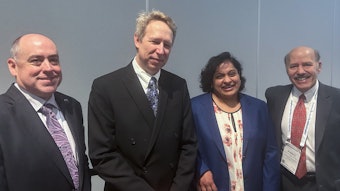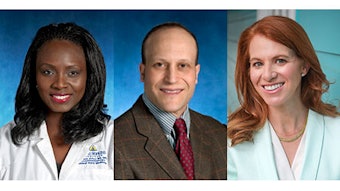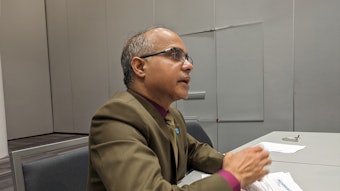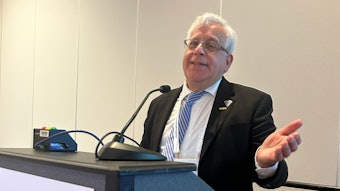Need for improvement in U.S. maternal mortality rate
The anesthesiologist’s role on labor and delivery.
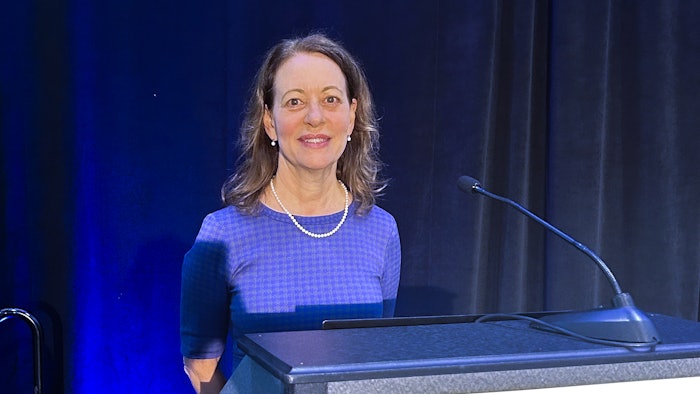
The data is in for maternal morbidity and mortality – out of 11 developed countries, as of 2023, the United States had the highest maternal mortality rate. The leading causes of pregnancy-related mortality in 2018-2020 included hemorrhage, cardiovascular disease, and infection. The numbers were higher in women of color and those living in rural versus major urban centers in the country.
These alarming facts served as the springboard for the 2023 SOAP/Gertie Marx Lecture by Barbara M. Scavone, MD, Professor of Anesthesia and Critical Care and Professor of the Department of Obstetrics and Gynecology at the University of Chicago.
In her lecture, titled “The Anesthesiologist’s Role on Labor and Delivery,” Dr. Scavone outlined recommendations at each level for the patient, provider, systems, and community to begin to counter these jarring numbers. At the patient level, she encouraged public education, expanded home health, and case manager and peer support. For health care professionals, she recommended education and training, patient safety bundles, and protocolized care. For systems, she said education and training were also necessary, with enhanced coordination and communication between facilities. At the community level, she cited expanded Medicaid in all states with more Medicaid-accepting providers as well as extended Medicaid coverage to one year. She said temporary housing, transportation, and support of Maternal Mortality Review Committees (MMRCs) and perinatal quality collaboratives are necessary.
She also introduced the audience to the Alliance for Innovation on Maternal Health (AIM), a quality improvement initiative she’s involved in. AIM’s mission is to reduce maternal mortality and severe maternal morbidity within the United States by developing Patient Safety Bundles and resources to support quality improvement, develop a national data collection system, and communicate to advance awareness of maternal health issues.
Patient Safety Bundles are collections of evidence-informed best practices, developed by multidisciplinary experts, which address clinically specific conditions in pregnant and postpartum people.
Dr. Scavone cited implementation of a Hemorrhage Patient Safety Bundle, which resulted in fewer cases of severe hemorrhage and coagulopathy, fewer transfusions per 100,000 births, fewer hysterectomies, a reduction in severe maternal morbidity, and a reduction in nontransfusion severe maternal morbidity.
“Yes, it can all be overwhelming and discouraging. You might be thinking, ‘I am just the anesthesiologist. Why bother?’” she asked. “If you are feeling overwhelmed and discouraged, I would like to introduce you to my mother. My mother was a practical woman. My mother said, ‘You can’t change the whole world, but you can change your little corner of the world.’”
Dr. Scavone listed what anesthesiologists can do to change their corner:
- Go to board rounds every shift.
- Place epidural catheters in laboring patients.
- Collaborate on unit policies and protocols.
- Implement AIM patient safety bundles.
- Join your state perinatal quality collaborative.
- Join your state MMRC. 50% of states have an anesthesiologist.
- Join the Society for Obstetric Anesthesia and Perinatology because they support education and protocol development.
- Conform to maternal levels of care.
- Encourage OB anesthesia fellowships.
In closing, she shared a quote from Margaret Chan, who served as director general of the World Health Organization (WHO) from 2007 to 2017.
“Maternal mortality health is a very sensitive indicator. All you need to look at is a country’s maternal mortality rate. That is the surrogate for whether the country’s health system is functioning. If it works for women, I’m sure it will work for men.”



